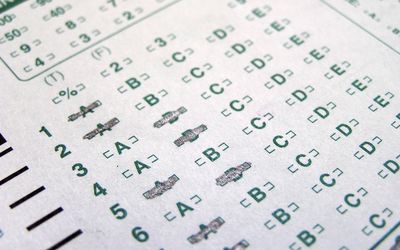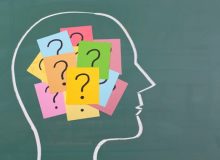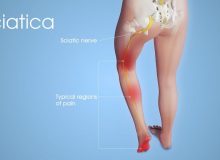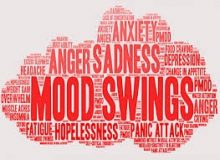30 Jul 2019
The MMPI2 Test
Yesterday I took a mental health test to possibly narrow down even more where/what my brain does.
I’ve been diagnosed Bipolar I (rapid cycling) and ADHD for 20 years now, but when I was first diagnosed (and subsequently), it was from explanations of my experiences since I was about 12 years old and on.
Though I do not doubt my diagnosis, I occasionally wonder if I have other things going on or maybe, just maybe I lean towards the personality disorder side (sometimes), like BPD.
Anyhow, the test helps a bit of the narrowing down and backs up what we already know.
So the test itself is called the Minnesota Multiphasic Personality Inventory. It was created in 1947 and has gone through many changes due to testing and scientific research. It is the most frequently used clinical testing instrument and one of the most researched psychological tests in existence.
I took the MMPI-2 long form, which means it has 567 true or false questions and it took me about 90 minutes.
At the bottom I cut and paste everything it tests for, which is the most fascinating part for me, but I put it at the bottom because it’s a lot and I understand not everyone gives that much of a shit 😜
This test is meant to be answered in the best way that you can. You may not be completely in the true or false, but answer the one that is mostly for you, but don’t leave any empty (this is so difficult for my pedantic brain).
Also answers are based on the past 1-2 months and (I had to ask) as you feel on medication now (since my medication has changed quite a bit in the past 1-2 months).
Because I overthink things, ESPECIALLY tests and psychology tests (which are one of my favorite things to analyze EVER. I always spend to much time thinking about they why of asking that specific question or that specific wording more than the actual question. Also the culmination of certain types of questions and the order they are in, etc. I really should just go into psychology and researching tests and better test methods. It has crossed my mind many times), I had a lot of issues with the questions.
Let’s start with the most numerous problem (for me. Of course this is all opinionated).
I HATE double negatives. So single negative questions on a true or false test really trip me up. I have to spend a good extra minute or so just reworking the question so I can answer correctly. And there were SO many of these type.
Examples:
152. I do not tire quickly.
155. It wouldn’t make me nervous if any members of my family got into trouble with the law.
156. I am never happy unless I am roaming or traveling around.
163. I do not have a great fear of snakes.
335. I am not usually self-conscious
I have to sit there and take out the negative word and figure out how I would answer the positive question, then assume my answer would be the opposite once you put the negative word back in.
However, my brain doesn’t like to just settle for that. It wants to double and triple check that it would really correctly answer it the way I want with that formula. Every. Single. Time.
Side note, this is why math and I have a love/hate relationship. I get it really quickly, if I don’t over think it, but I just can’t leave it like that, I have to make sure, and then I get lost in my reworking.
So the next problem I have is I wonder if they take into factor personal experience. Which is another side note –
This EXACTLY WHY behaviorism isn’t taught anymore except as an example of an important stepping stone to where we are now. Also why there are no SOFT OR HARD SCIENCES, which are only buzz words that diminish funding for “soft” sciences, yet they both use empirical reasoning, numbers from research and follow the same scientific method. Just because one was “discovered “ later than the other does NOT make it less untrue
/pet peeve soapbox.
Anyhow, back to personal experience. I don’t think it may be that important in the specific questions I had issues with, but then I wonder why not.
Examples:
1. I like mechanics magazines
I put false, but really, I kinda do like them, but not for the reason I think they are asking it for.
I like the diagrams and visuals, but I wouldn’t go searching them out on my own, ever. Or ever even think about doing so.
40. Much of the time, my head seems to hurt all over.
I put false even though, right now it does because I just started contacts for the first time, but I didn’t think that counted. But it still bothers my pedantic mind to answer false. Again, my own issues.
(And then because I know not everyone is as neurotic as me, I worry about other test takers and misdiagnosis because they may have answered yes to this because of whatever insignificant reason that this question really wasn’t asking)
53. Parts of my body often have feelings like burning, tingling, crawling, or like “going to sleep”.
This was a hard one. I have all those but it ended up being an rx I am no longer on, BUT then I remembered my skin does feel electric when I’m super manic… but I haven’t been in a bit. So I answered true, but I was still on the fence.
Oh and then a bunch that had words in them that were religious “buzz words” so I always answered false, but I’m atheist. So, even if I was a mix of schizophrenic but still atheist, I think you would miss some diagnosis things.
Like:
72. My soul sometimes leaves my body
Yeah, atheist, so, whatevs
A lot of the other questions had the word “sin” in them, which I immediately just ignored and hit false no matter what they were asking.
I was actually a bit worried at how many “sin” questions there were. (I.e. 246. I believe my sins are unpardonable)
Then the family questions I just had a really hard time with.
478. I hate my whole family
Wait, probably bad example because of the use of the absolute word “whole”
But who do I consider, like immediate (my husband and kids), or my mom and dad and aunts/uncles, my in-laws, my ex husband and his wife and kids which I am closer to as family than my own mother?
I mean, what are we talking about here?
Other family questions I wasn’t sure about:
449. Some of my family members have quick tempers
54. My family does not like the work I have chosen (or the work I intend to choose for my lifework).
543. Terrible thoughts about my family come to me at times.
(This one also fits under another category of what constitutes “terrible”? Like do i wish something terrible to befall them, or my common “omg if I don’t call my kids in closer to the beach shore a wave, riptide,shark, etc is going to kill/harm them”
Or “I really hope their decisions in life don’t end them up with a rough terrible life”)
See, unclear.
Another one that fits under another category that I also want to discuss:
522. Even without my family I know there will always be someone there to take care of me.
1. same issue with “family” and
2. um I don’t ever or have ever expected my family to take care of me. I take care of me.
So is 2 exactly what they were going for.
And then the two part questions they want you to answer with one answer.
288. My parents and family find more fault with me than they should.
My parents OR my family (and again, what are we calling “family”???) because two separate and different answers here.
Okey, there are more examples but I have gotten bored of going through all 567 questions to find them.
And I think all I have done here is prove my neuroses. 🤣
Interested in seeing all the questions? Go here: https://www.mmpionline.com/the-mmpi-questions/
What the test tests for:
10 Clinical Scales
The MMPI-2 and MMPI-A have 10 clinical scales that are used to indicate different psychological conditions, though the MMPI-2-RF and the MMPI-A-RF use different scales. Despite the names given to each scale, they are not a pure measure since many conditions have overlapping symptoms. Because of this, most psychologists simply refer to each scale by number.
The clinical scales on the MMPI-2 and the MMPI-A include:
- Scale 1—Hypochondriasis: This scale was designed to assess a neurotic concern over bodily functioning. The items on this scale concern physical symptoms and well-being. It was originally developed to identify patients displaying the symptoms of hypochondria.
- Scale 2—Depression: This scale was originally designed to identify depression, characterized by poor morale, lack of hope in the future, and general dissatisfaction with one’s own life situation. Very high scores may indicate depression, while moderate scores tend to reveal a general dissatisfaction with one’s life.
- Scale 3—Hysteria: The third scale was originally designed to identify those who display hysteria or physical complaints in stressful situations. Those who are well-educated and of a high social class tend to score higher on this scale. Women also tend to score higher than men on this scale.
- Scale 4—Psychopathic deviate: Originally developed to identify psychopathic patients, this scale measures social deviation, lack of acceptance of authority, and amorality (a disregard for morality). This scale can be thought of as a measure of disobedience and antisocial behavior. High scorers tend to be more rebellious, while low scorers are more accepting of authority. Despite the name of this scale, high scorers are usually diagnosed with a personality disorder rather than a psychotic disorder.
- Scale 5—Masculinity-femininity: This scale was designed by the original authors to identify homosexual tendencies, but was found to be largely ineffective. It’s intended to show how much or how little a person identifies with his or her gender’s interests.
- Scale 6—Paranoia: This scale was originally developed to identify patients with paranoid symptoms such as suspiciousness, feelings of persecution, grandiose self-concepts, excessive sensitivity, and rigid attitudes. Those who score high on this scale tend to have paranoid or psychotic symptoms.
- Scale 7—Psychasthenia: This diagnostic label is no longer used today and the symptoms described on this scale are more reflective of anxiety, depression, and obsessive-compulsive disorder. This scale was originally used to measure excessive doubts, compulsions, obsessions, and unreasonable fears.
- Scale 8—Schizophrenia: This scale was originally developed to identify schizophrenic patients and reflects a wide variety of areas including bizarre thought processes and peculiar perceptions, social alienation, poor familial relationships, difficulties in concentration and impulse control, lack of deep interests, disturbing questions of self-worth and self-identity, and sexual difficulties. It may show potential substance abuse, emotional or social alienation, eccentricities, and a limited interest in other people.
- Scale 9—Hypomania: This scale was developed to identify characteristics of hypomania such as elevated mood, hallucinations, delusions of grandeur, accelerated speech and motor activity, irritability, flight of ideas, and brief periods of depression.
- Scale 0—Social introversion: This scale was developed later than the other nine scales. It’s designed to assess a person’s shyness and tendency to withdraw from social contacts and responsibilities.
Validity Scales
All of the MMPI tests use validity scales of varying sorts to help assess the accuracy of each individual’s answers. Since these tests can be used for circumstances like employment screenings and custody hearings, test takers may not be completely honest in their answers. Validity scales can show how accurate the test is, as well as to what degree answers may have been distorted.
The MMPI-2 uses these validity scales:
- The L Scale: Also referred to as the lie scale, this “uncommon virtues” validity scale was developed to detect attempts by patients to present themselves in a favorable light. People who score high on this scale deliberately try to present themselves in the most positive way possible, rejecting shortcomings or unfavorable characteristics.
- The F Scale: This scale is used to detect attempts at overreporting. Essentially, people who score high on this scale are trying to appear worse than they really are, they may be in severe psychological distress, or they may be just randomly answering questions without paying attention to what the questions say. This scale asks questions designed to determine if test takers are contradicting themselves in their responses.
- The K Scale: Sometimes referred to as the “defensiveness scale,” this scale is a more effective and less obvious way of detecting attempts to present oneself in the best possible way by underreporting. People may underreport because they’re worried about being judged or they may be minimizing their problems or denying that they have any problems at all.
- The ? Scale: Also known as the “cannot say” scale, this validity scale assesses the number of items left unanswered. The MMPI manual recommends that any test with 30 or more unanswered questions be declared invalid.
- TRIN Scale: The True Response Inconsistency Scale (TRIN) was developed to detect people who use fixed responding, a method of taking the test without regard to the question, such as marking ten questions “true,” the next ten as “false,” and so on. Fixed responding could be used due to not being able to read or comprehend the test material well or being defiant about having to take the test. This section consists of 20 paired questions that are the opposite of each other.
- VRIN Scale: The Variable Response Inconsistency Scale (VRIN) is another method developed to detect inconsistent, random responses. Like fixed responding, this can be intentional or it can be due to not understanding the material or not being able to read it.
- The Fb Scale: This scale is designed to show changes in how a person responded in the first half of the test versus how he or she responded in the second half by using questions that most normal respondents didn’t support. High scores on this scale sometimes indicate that the respondent stopped paying attention and began answering questions randomly. It can also be due to over or underreporting, fixed responding, becoming tired, or being under severe stress.
- The Fp Scale: This scale helps detect intentional overreporting in people who have a mental health disorder of some sort or who were using random or fixed responding.
- The FBS Scale: The “symptom validity” scale is used for people who are taking the test because they’re claiming that they had a personal injury or disability. This scale can help establish the credibility of the test taker.
- The S Scale: The “superlative self-presentation” scale was developed in 1995 to look for additional underreporting. It also has sub-scales that assess the test taker’s belief in human goodness, serenity, contentment with life, patience/denial of irritability, and denial of moral flaws.






MMPI2 Test Results – Fuck, I Don't Remember!
September 6, 2019 @ 6:36 pm
[…] I posted back at the end of July about taking a psychological test… […]